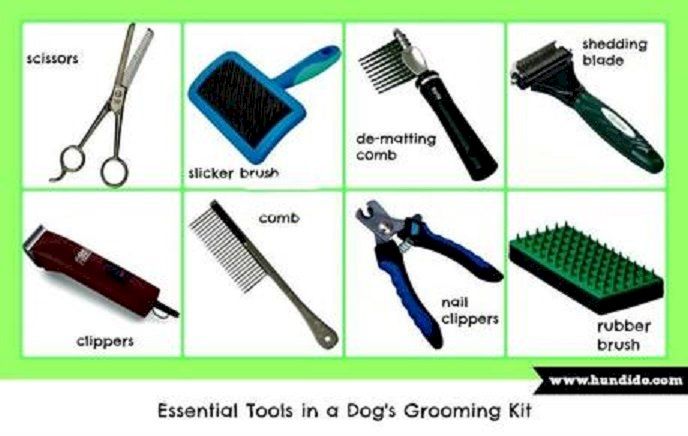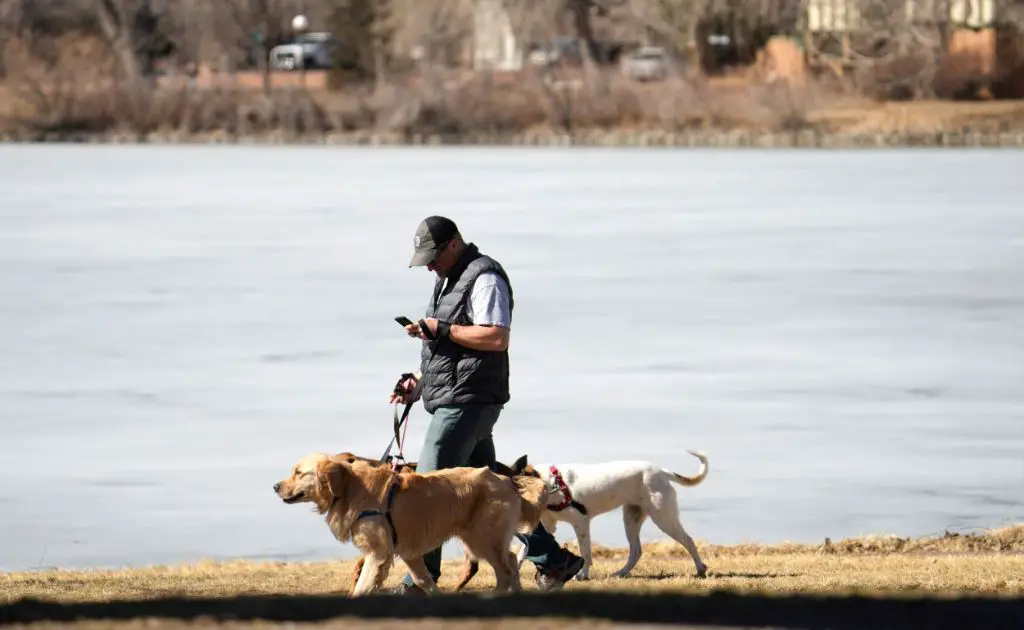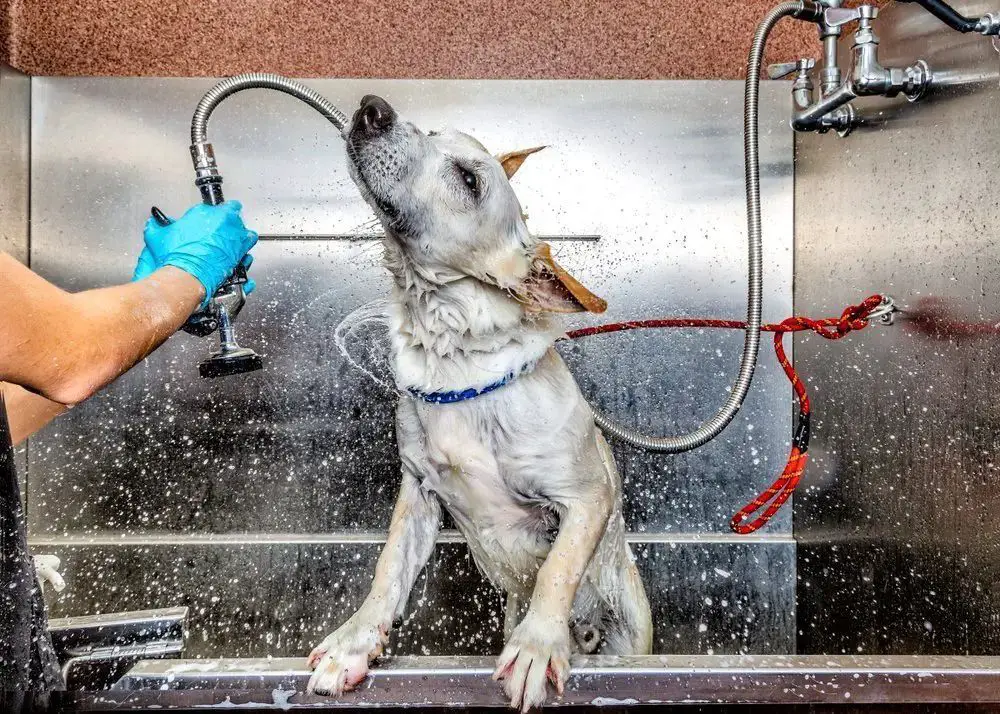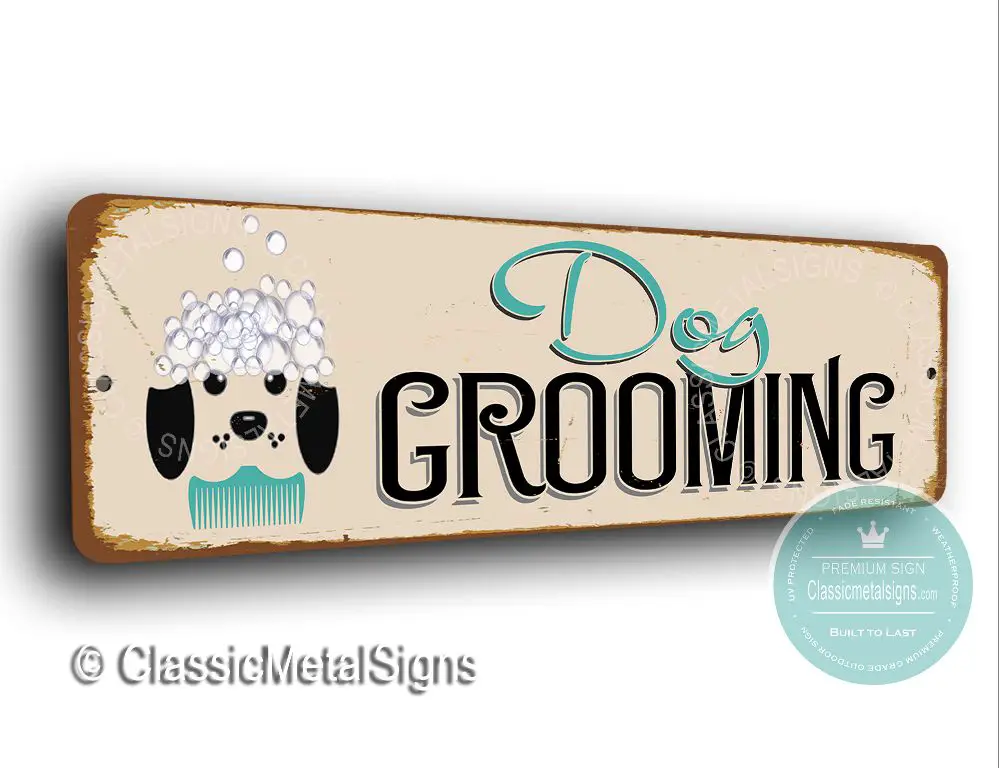Overview of the Dog Grooming Industry
The dog grooming industry in the United States is a $7 billion market that continues to grow year after year. As of 2022, there are over 110,000 pet grooming and boarding businesses across the country. The industry has seen steady growth, even through recessions, as pet owners view grooming and care services as necessities rather than luxuries for their pets.
Typical services offered by professional dog groomers include bathing, brushing, nail trimming, ear cleaning, teeth brushing, haircutting and styling. More advanced grooming salons may also provide services like massage, skin treatments, hair dyeing, nail polishing and even fitness programs. Groomers must have thorough knowledge of dog anatomy, behavior and health to properly bathe, brush and style different breeds’ coats.
Proper training and certification is highly recommended for dog groomers. Reputable grooming schools and apprenticeships teach groomers how to safely and properly use grooming tools, bathe and dry dogs, handle difficult clients and operate a business. Certifications from organizations like the National Dog Groomers Association of America also demonstrate professional expertise.
Startup Costs
When starting a dog grooming business, you’ll need to invest in key equipment and supplies. Expect to spend $10,000-$30,000 on items like:

- Grooming tables
- Clippers and blades
- Shampoos and conditioners
- Dryers
- Scissors and shears
- Towels and aprons
- Crates and tubs
You’ll also need to factor in costs for leasing a physical space for your salon or investing in a mobile grooming van. Leasing a space provides more room to work, but requires a security deposit and ongoing rent payments. A mobile grooming van gives you flexibility to serve different areas, but limits the number of dogs you can groom at once.
Finally, plan for expenses like business licensing fees, permits, and insurance, which can range from a few hundred to a few thousand dollars. Thoroughly research all legal and regulatory requirements in your state and municipality when budgeting.
Building a Customer Base

When starting a new dog grooming business, it’s crucial to build a loyal customer base. There are several effective strategies for attracting new clients:
Marketing Strategies: Spread the word about your services through print and online advertising, social media, and word-of-mouth referrals. Offer promotions and discounts to first-time customers. Stage grand opening events to generate buzz. Sponsor a local dog charity event to get community exposure.
Partnerships: Approach local veterinary clinics, pet stores, shelters, and dog daycares to propose referral or co-marketing partnerships. Offer them discounts or commissions for referrals. Host events together or cross-promote each other’s services. These partnerships provide visibility to pet owners most likely to need grooming.
Retention Programs: Loyal customers are the backbone of a successful grooming business. Offer incentives for repeat visits, such as punch cards or monthly packages. Send reminders when it’s time for their next appointment. Personalize the experience by getting to know client’s pets and preferences. Show appreciation through holiday gifts or loyalty rewards. Make clients feel valued so they keep coming back.
Pricing Your Services
Pricing is one of the most important factors in running a successful dog grooming business. You need to find the sweet spot that generates profit while remaining competitive. When setting your prices, research the going rates in your area for various services. Some pricing factors to consider:
Average Service Prices
Basic bath and brush services range from $25-$50 depending on the dog’s size. Full grooming services like haircuts, nail trims, ear cleaning, etc. range from $50-$150+. Specialized services like teeth brushing, flea treatments, de-shedding, etc. can add $5-$20 per service.
Package Deals
Offer package deals to encourage customer loyalty and repeat business. For example, provide a discount when purchasing 5 or 10 grooming sessions upfront. Or offer a deluxe package that bundles bathing, haircut, nails, ears, etc. for one price.
Membership Options
Consider a membership program that provides benefits like discounted services, free add-ons, priority bookings, etc. Charge a monthly or annual fee to enroll. Tiered levels provide more perks at higher price points.
Staffing
Staffing is a critical component of running a successful dog grooming business. You’ll need to hire and train competent groomers and other staff to assist with operations.

When hiring groomers, look for those with formal training and grooming certifications. Experience grooming various breeds is also important. Thoroughly vet candidates to ensure they have the skills and temperament to safely handle dogs. Some groomers may need to complete a working interview where you evaluate their technique.
Plan an intensive training period for new hires to teach your standard processes for bathing, clipping, scissoring, nail trimming, etc. Educate them on styling options, handling challenging dogs, calming anxious pets, and operating tools and equipment safely.
Determine pay rates that will attract talented staff. Groomers are often paid commission based on the number of dogs serviced. You may also pay hourly or a base rate plus commission. Offer benefits like health insurance and retirement plans to reduce turnover.
Develop schedules that provide adequate coverage at busy times. Pay close attention to scheduling during holidays, weekends and other peak periods. Have a plan for managing staff absences and dealing with call-outs. Operating with a lean staff increases risks of turning away customers, so have fill-in workers available.
Supplies and Inventory
One of the most important aspects of operating a dog grooming business is having the proper supplies and tools on hand. At a minimum, you’ll need a variety of quality shampoos and conditioners to keep your canine clients clean and fresh. Opt for gentle, natural ingredients that won’t irritate sensitive skin. You’ll also need nail clippers, brushes, combs, scissors, clippers, towels, blow dryers, and anything else required for bathing, brushing, trimming, styling, cleaning ears, and clipping nails.
Make sure to keep enough shampoo, conditioner, and other supplies in stock so you don’t run out mid-grooming appointment. Track your inventory and create a schedule for restocking items before they are depleted. Develop a system to reorder products when they reach a certain threshold. Purchase supplies in bulk whenever possible to get volume discounts.
Maintain detailed inventory records of all your grooming products and tools. Take note of expiration dates, track usage rates, and monitor popular items that need frequent restocking. Keeping your supplies organized and knowing when to reorder will ensure you have what you need when clients come in.
Safety and Legal Considerations
When starting a dog grooming business, it’s important to prioritize safety and follow all legal regulations. Here are some key considerations:

Dog Handling Training: Groomers should have proper training in dog behavior, handling, and restraint techniques. This helps ensure the safety of both the dogs and the groomers. Formal training programs and certifications are available. Additionally, groomers should have knowledge of different breeds, their personalities and special needs.
Insurance: Business insurance is highly recommended to cover any incidents or injuries that may occur in the grooming facility. This includes dog bites or other harm to customers or employees. Liability insurance will help protect the business in the event of a lawsuit.
Licensing and Regulations: Most states and local municipalities require dog grooming businesses to be licensed. There are also regulations around proper sanitation, cage sizes, fire codes, zoning, and waste disposal that must be followed. Adhering to all licensing and regulations will help avoid fines or closure.
Ensuring the safety of dogs and people, while operating legally, is a top priority for any dog grooming entrepreneur. Investing in training, insurance, and compliance helps build a sustainable, reputable business.
Profit Potential
When starting a new dog grooming business, it’s important to have realistic expectations about profit potential. While dog grooming can be a lucrative industry, it takes time to build up a customer base and recoup startup costs. Here are some key factors to consider:
Breakeven Analysis
Conduct a breakeven analysis to determine the level of sales you need to cover your expenses. Factor in costs like rent, payroll, supplies, insurance, utilities, and any loan payments. On average, a dog grooming business breakeven point is about 200-400 dogs groomed per month, but this varies widely based on your unique cost structure.
Profit Margins
A professional dog groomer can expect average profit margins of 40-60% per appointment after reaching the breakeven point. Profit margins are higher for add-on services like nail trimming, teeth brushing, and special styling. Locations with higher average incomes and demand for luxury grooming services see higher profit margins.
Growth Opportunities
There are plenty of growth opportunities to increase profits over time. You can raise prices moderately as demand grows, expand to a larger facility, hire additional groomers for more capacity, sell retail products, provide pickup/dropoff services, partner with doggy daycares or boarding kennels, and more. Establishing your business and reputation takes time, but profit potential grows as you scale.
Day-to-Day Operations
Running a successful dog grooming business requires diligent day-to-day operations. Here are some of the key tasks you’ll need to stay on top of:
Scheduling Appointments
Managing your appointment schedule is crucial. You’ll need to balance booking enough dogs each day to meet your revenue goals, while avoiding double-booking or overpacking your schedule. A calendar or appointment booking software can help you track appointments and availability.
Record Keeping
Maintain detailed records for each pet you see, including contact info, grooming history, and notes about their behavior or preferences. This helps provide better customer service and continuity of care.
Cleaning and Maintenance
The cleanliness and maintenance of your facility is important for health, safety, and customer perception. Schedule thorough daily cleanings. Properly sanitize and disinfect tools, tubs, tables, and other surfaces. Stay on top of laundry, restocking supplies, and any equipment repairs.
Conclusion
Starting a dog grooming business requires careful planning and consideration. The startup costs can range from $10,000-$150,000 for things like equipment, supplies, licensing, training, rent, renovations, marketing, and initial inventory and staffing. You’ll need to budget for ongoing expenses as well. Building up a loyal customer base is critical, which takes time, quality services and skilled staff. Effective marketing and competitive pricing are key. Turnover is high in this industry, so focus on retaining good employees by providing a positive work environment, fair pay and benefits.
The profit potential can be substantial if you run a reputable and efficient business, with possible revenues of $100,000-$500,000+ per year. But you need the dedication to build your brand, manage staff and operations, and provide consistent service. This is a hands-on business requiring physical stamina. Start small and don’t overextend yourself initially. Offer high-quality services, use positive reinforcement with dogs, and maintain high safety and cleanliness standards. Join industry groups and continue learning best practices.
Overall, a dog grooming business can be very rewarding if you have the skills, work ethic, management capabilities, and passion for working with pets and customers. But it requires major commitment. Weigh the pros and cons and realistically assess if you have the resources and dedication needed to build a thriving grooming service.